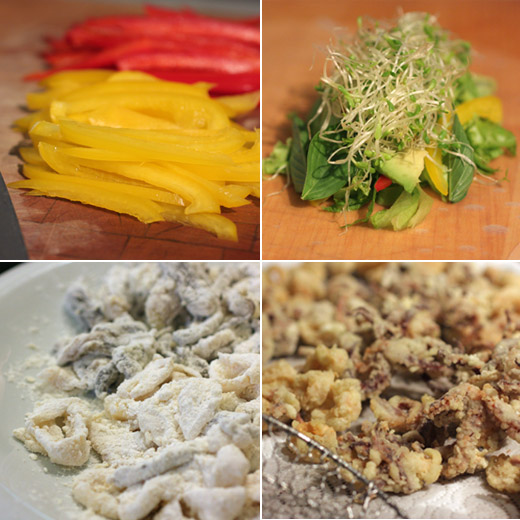You start by grating lots of fresh ginger and letting that lovely fragrance start to fill your kitchen. A little of the grated ginger was added to a skillet along with butter and honey, and the rest was left in a mixing bowl. The butter and honey in the skillet was melted, and sliced peaches were added and coated with the syrup and then the pan was set aside. The dry ingredients were sifted together, and those included oat flour, all-purpose and whole wheat flours, sugar, dark brown sugar, baking powder, baking soda, and salt. In a separate bowl, the wet ingredients were added to the remaining grated ginger including melted and cooled butter, whole milk, sour cream, an egg, and finely chopped crystallized ginger. Wet ingredients were mixed into the dry, and the batter was ready. In all the muffin recipes in this book, Kim Boyce recommends using only every other cup in a muffin pan. By leaving every other cup empty, the heat circulates well and the muffins rise better. I had learned of this trick from a different muffin recipe, and it really does work well. So, the batter was poured into every other muffin cup, each muffin was topped with two peach slices, and the syrup was spooned on top of the peaches before they went into the oven.
Of course they smelled amazing as they baked, and of course they looked pretty with the peach slices on top. There was no doubting that these were going to be good. I just had no idea how good. I thought I knew all about peaches with ginger, but it's nice to be taken by surprise like this.

Tweet

















































